可视化操作系统成主流(29k字)
Posted 科学Sciences
tags:
篇首语:本文由小常识网(cha138.com)小编为大家整理,主要介绍了可视化操作系统成主流(29k字)相关的知识,希望对你有一定的参考价值。
科学Sciences导读:纵观计算机历史,操作系统与计算机硬件的发展息息相关。本文从操作系统演进的五个阶段(9k字)、早期操作系统的发展阶段(10k字)、硬件兼容的UNIX起源和谱系(11k字)、可视化操作系统成主流(29k字)、操作系统功能和技术简介(4k字)等五个方面,介绍计算机操作系统的演进、谱系和产品发展史。计算机发展过程中,出现过许多操作系统:DOS、MacOS、Windows、Unix、Linux、Free BSD等。关键词:计算机,操作系统,OS,Multics,Unics,Unix,Minux,Linux,Xenix、OS/2、Dos,Windwows,ios,android,演进,谱系。赞赏支持科普作者后,公号输入栏发送“操作系统史”获取本PDF资料,下载学习科技知识。
计算机操作系统的演进、谱系和产品发展史(74k字)
目录
A计算机操作系统的演进、谱系和产品发展史 (67k字)
一、操作系统演进的五个阶段 Five Stages Of Operating System Evolution
二、早期主机操作系统的发展 Early Host Operating System Development
三、硬件兼容UNIX起源和谱系 Hardware Compatible With UNIX Origin And Pedigree
四、可视化操作系统成为主流 Visual Operating System Into The Mainstream
五、操作系统功能和技术简介 Introduction To Operating System Features And Technologies
素材(5k字)
计算机操作系统的演进、谱系和产品发展史
ComputerOperating System Evolution, Pedigree, and Product Development History
文Author|秦陇纪Qinlong GEcai,科学Sciences©20190618Tue
操作系统(OS)是管理计算机硬件和软件资源并为计算机程序提供公共服务的软件,是计算机系统中系统软件的组件。制造和使用史上最强大的信息处理工具——计算机,要能够设计硬件系统架构,生产制造芯片,设计开发操作系统和应用程序,并维持信息技术生态。还要在信息技术领域外,严格确定保护知识产权,维持开发人员支持,否则无以为继。本书介绍操作系统(OS)的演进、谱系和产品发展史。An operating system (OS) is systemsoftware that manages computer hardware and software resources and providescommon services for computer programs, is a component of the system software ina computer system. Application programs usually require an operating system tofunction. [1]Manufacture and use the most powerful informationprocessing tool in history—computers, it’s able to design hardware systemarchitectures, manufacture chips, design and develop operating systems andapplications, and then maintain an information technology ecosystem. Inaddition to the field of information technology, it is necessary to strictlydetermine the protection of intellectual property rights, and maintain thesupport of developers, otherwise it will not be able to continue. This bookdescribes the development history of operating system (OS) evolution, pedigree,and products.
四、可视化操作系统成为主流 Visual OperatingSystem Into The Mainstream
如今的品牌计算机(Lenovo、Dell、HP等),买来时已经安装了操作系统。我们在操作系统上安装各种应用程序(App)来浏览网页、看视频、听音乐、玩游戏、写作和设计等,还可以管理硬盘、移动硬盘和U盘等管理文件——像桌面电脑装的Windows7、Windows10,Apple笔记本的MacOS X、iPhone手机的iOS,手机里Google公司的Android系统等,他们都是操作系统。我们通过操作系统来和计算机交互,系统协调我们安排给计算机的各种任务。
但在1984年以前,操作系统都是基于企业或高校科研机构的大型主机来设计和使用的,并没有普及到平民家庭能用的地步;绝大部分计算机系统都基于命令行终端,没有图形化操作界面。这样的操作系统只被极少部分工业界高级专业人员和学术界的老师、学生使用。
1980年代开始,家用桌面型的个人计算机诞生并走入普通人家,可视化图形界面的操作系统流行起来。几百个耳熟能详的操作系统诞生并演进——AmigaResearch OS,ArchLinux,AresDesktop,BeOSMax,BeOSPersonal,BlueCatLinux,Brix,Calyptos,Cefarix,Clicker32,ClosedBSD,Conectiva,Coyote Linux,CP/M,Darwin,DebianGNU/HURD,DebianGNU/Linux,DebianGNU/NetBSD,DragonLinux,eCos,EnGardeLinux,ERIKA,EROS,FedoraCore,Fiasco,FIRE,FlightLinux,FreeBSD,FreeDOS,GazOS,GeekOS,GEM,GeminiNucleus,GenSTEP,GentooLinux,GNU/LesbianLinux,Immunix,IPCop,JBLinux,KNOPPIXLinux Live,Komodo,KRUD,KuruminLinux,LainOS,LibraNetLinux,LinuxAntarctica,LinuxFrom Scratch,LinuxRouter Project,LycorisDesktop/LX,Mandrakelinux,MandrakesoftBusiness,Menuet,Minix,MkLinux,Mobius,ModulOS,MomongaLinuxd,NetBSD,NewOS,Oberon,Odin,OpenBeOS,OpenBSD,OppcOS,PeanutLinux,PicoBSD,Plan 9,PM_SZ_OS,PowerOS,ReactOS,RDOS,Red FlagLinux,ROCKLinux,Rome,RTEMS,S.Ha.R.K,SkyOS,SlackwareLinux,SmoothWallExpress,SOTLinux,Spinix,StampedeLinux,Syllable,TinfoilHat Linux,TurboLinux,Unununium,Vector Linux,VisualNetwork OS,VSTa,WINE,WinLinux,Wolverine,Xandros,XTeamLinux,YellowDog Linux,yellowTABZeta,Yoper,CommercialAlternatives,AIX,AmigaOS,eComStation,HancomLinux,HP-UX,IBMPC-DOS,IRIX,Linspire,LynxOS,Mac OS X,Mac OS XServer,MontaVistaLinux,MorphOS,NovellNetWare,OpenVMS,OS/2 Warp,PhatLinux,QNX,Red HatDesktop,RedHat Enterprise Linux,RISC-OS,SmoothWallLtd.,SunJava Desktop System,SunSolaris OS,SuSEHome Users,SuSELINUX Server,Tru64UNIX…至今仍不停歇、蓬勃发展。
1984年,苹果(Apple)公司Mac OS System 1.0——第一个划时代的图形界面,其拖拉窗口等技术到今天还在使用。之后,家用桌面型个人计算机越来越流行和普及,一系列可视化图形操作系统诞生并变成主流,现代图形操作系统和应用程序、标准接口硬件不断共同发展,越来越易于使用。
4.1 可视化操作系统演进 VisualOperating System Evolution
1980年代以来,操作系统的界面设计经历了众多变迁,OS/2、Macintosh、Windows、Linux、Symbian OS等各种操作系统将GUI设计带进新时代。虽然美国施乐Xerox Alto桌面计算机(1973年)是第一个采用图形界面的操作系统,但直到1984年前后,世界上几个重要的操作系统都在这个时间段内发布了基于操作系统的商用版本,且都是图形化界面,操作系统的发展发生了显著变化。比如,
1. IBM公司VisiCorp第一款可视化操作系统VisiOn发布(1980年);专为大型企业设计和使用。
2. 苹果公司的第一款可视化操作系统Mac OS System 1.0发布;MacOS来自freeBSD版Unix,是Unix阵营向普通消费者进军的主力,图形化界面和应用程序,降低了系统和机器的使用门槛。
3. 微软公司推出Windows1.0(1985年);微软之前一直使用MS-Dos命令行的系统,看到苹果可视化界面后,马上开发出Windows系统,共同抢占普通消费者市场,由此导致了苹果和微软两大公司长达30多年相恨相杀的争斗。
4. NEC公司宣布基于ITRON/86规范,第一个实现了ITRON操作系统。ITRON和日本精密机械工业相结合,使日本在数据系统、工业机器人、办公机器方面处于世界领先地位。例如,日本的本田汽车中的引擎控制系统就是基于ITron的;我们做的日本电梯、汽车电控系统都有其操作系统。
这些操作系统近40年的演进,几乎影响了现代生活的方方面面,而我国一直没有形成这方面的研发力量和科技体系。下面我们按时间顺序回顾一下历史上出现过的、主要的图形操作系统。
① 施乐XeroxAlto图形界面
桌面计算机历史上的第一个图形界面是XeroxAlto(该系统并未商用,主要用于研究和大学)。
1973年4月,施乐公司帕罗奥托研究中心XeroxPalo Alto Research Center (PARC)设计了第一个可操作的图形操作系统Alto——真正意义上的个人计算机,使用3键鼠标、位运算显示器、图形窗口界面、以太网络连接,还有键盘、显示器等,第一个把计算机所有元素结合到一起的图形界面操作系统。从此,开启了计算机图形界面的新纪元。
下面是Alto机器和界面的图片(70年代的东西看起来还不错哦)。
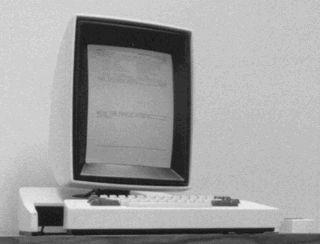
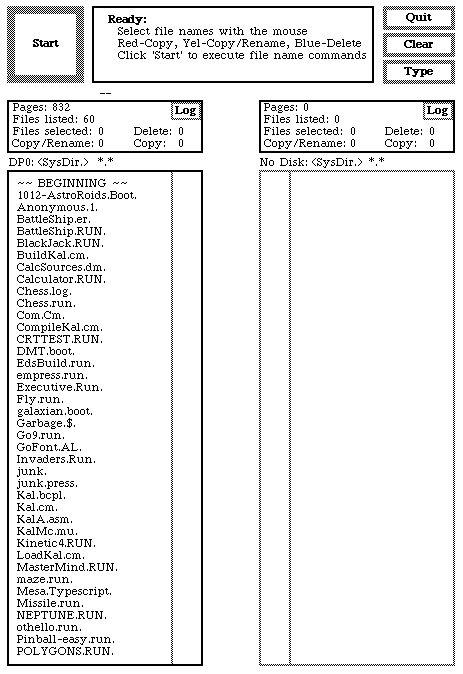
虽然施乐(Xerox)公司在Xerox Parc完成的Alto电脑,最先开发出图形界面,但并没有重视和推广。直到八年后,到处都是其它公司的图形可视化操作系统后,他们才推出了一款alto的商用版本。
1981年7月,xerox推出star系统Xerox8010 Star(released in 1981)——alto的商用版本,特点:双击图标技术、多窗口、对话框概念、1024×768的分辨率。这是第一个完整地集成了桌面和应用程序以及图形界面的操作系统,人们一开始叫它“Xerox Star”,然后又叫“ViewPoint”,再以后又叫作“GlobalView”。令人震惊吧,今天大家使用的竟然还是40年前的1024×768分辨率。
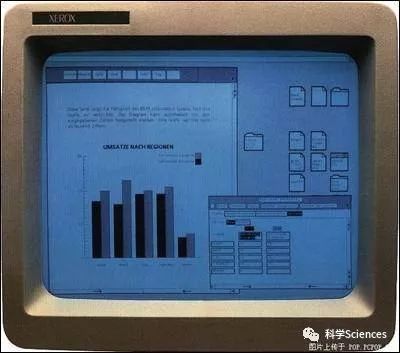
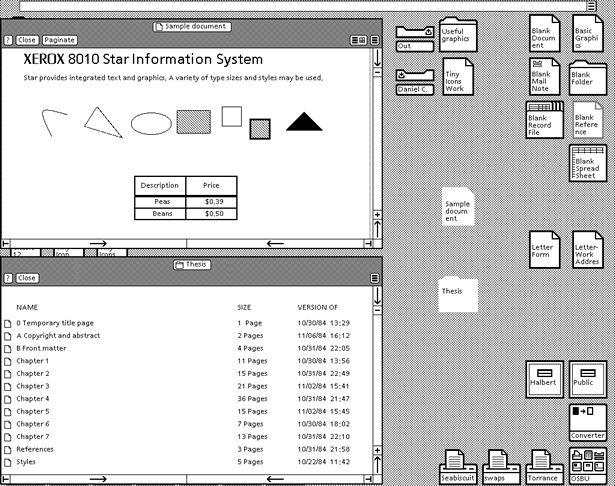
图33-34:Xerox 8010 Star,Source: toastytech.com
② 三河Perq图形工作站
1979年,三河计算机公司(Three RiversComputer Corporation)发布PERQ;1980年,推出Three Rivers PERQ图形工作站,一个元老级的图形工作站,也是图形界面的操作系统。
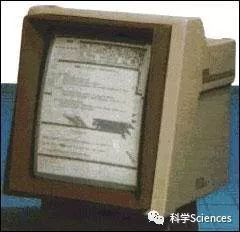
③ 苹果的Lisa办公系统、Mac操作系统
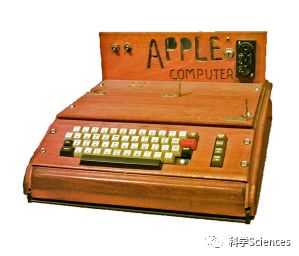
图36:1976年的Apple-I
1979年,施乐公司(Xerox)帕罗奥托研究中心(PARC)员工多米尼克•哈根(Dominik Hagen)访问了苹果电脑创始人史蒂夫•乔布斯(Steve Jobs),并向他展示了施乐发展的图形化使用者界面。乔布斯(Jobs)看到后被震惊了,回去就让技术人员去实现图形界面,还从施乐挖了好多技术人员来开发Lisa项目。虽然Lisa最后失败了,但为随后的麦金托什(Macintosh)项目积攒了好多经验。

1983年1月,苹果(Apple)公司推出Lisa办公系统AppleLisa Office System 1 (released in 1983)也叫Lisa OS——这里的OS是OfficeSystem的缩写,特点:下拉菜单和菜单条技术。这个由Apple公司开发的操作系统,主要目的是用于文档处理工作站。不幸的是,这款机器的寿命并不长,最终这个工作站被Apple公司更便宜的Macintosh操作系统所取代。Lisa OS几个升级包括1983年的Lisa OS2, 1984年的Lisa OS 7/7 3.1。下面是其操作系统截图。
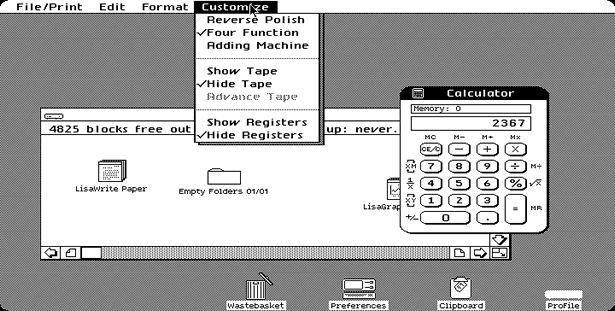
图38:Apple Lisa OS 1,Source: GUIdebook
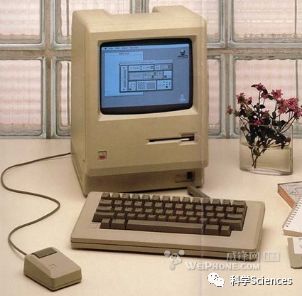
图39:Macintosh,简称Mac
1984年,苹果(Apple)公司Macintosh(麦金托什)发布,风靡世界。苹果推出发展了的Mac OS System 1.0 (released in 1984)——第一个划时代图形界面,其中很多技术到今天还在使用。比如,基于窗口用图标的UI,窗口可以被鼠标移动,可以使用鼠标拖动文件和目录以完成文件的copy和move。
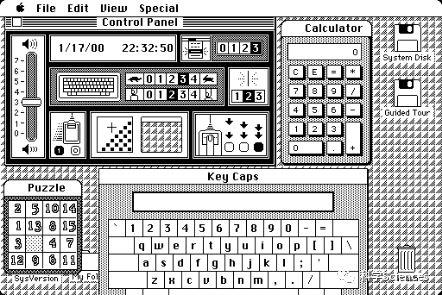
图40:苹果公司MacOS最初的界面
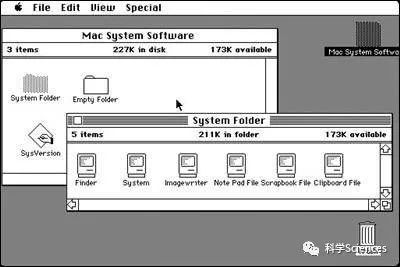
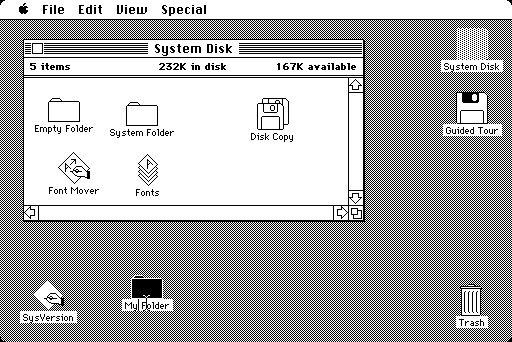
图41-42:Apple Mac System 1.0,Source: toastytech.com
1987年,苹果(Apple)公司推出MacintoshII(麦金托什)——第一款彩色mac系统,特点:640×480,56色,24位显卡。
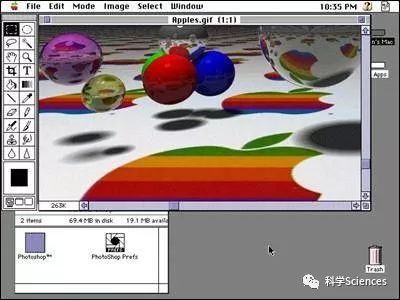
图43:1987年首款彩色mac系统--macintosh ii
1988年9月,苹果(Apple)公司发布GS/OS,是为AppleII GS设计的16位操作系统,这个系统跟Macintosh的外观很相像。
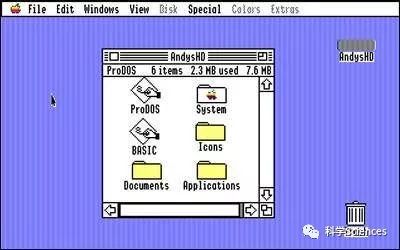
图44:1988年9月苹果ii gs设计的16位系统-gs/os
④ IBM的PC系列及DOS、Visi图形软件环境
1981年,IBM公司推出IBM 5150——第一部桌上型计算机型号IBM/PC(PersonalComputer),开创了个人计算机时代。推出后不久,它就成为一个领先的平台,使个人计算从玻璃房走入了人们的日常生活中。从1983年1月开始,IBM PC在全球各地销售。销量最好的时期,每个工作日的每一分钟就有一台IBM PC销售出去,被人们称为“蓝色巨人”。
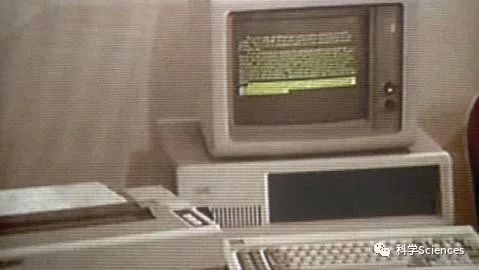

图45-46:IBM PC AT
1984年,IBM公司推出80286处理器为核心的16位增强型个人计算机IBMPC/AT。由于IBM公司在发展个人计算机时采用了技术开放的策略,使个人计算机风靡世界。先是IBM PC,然后是IBM PC XT、IBM PC/AT、IBM PCjr、IBM便携PC,最后是IBM PS/2,销量从几千台增加到数万台。[26]
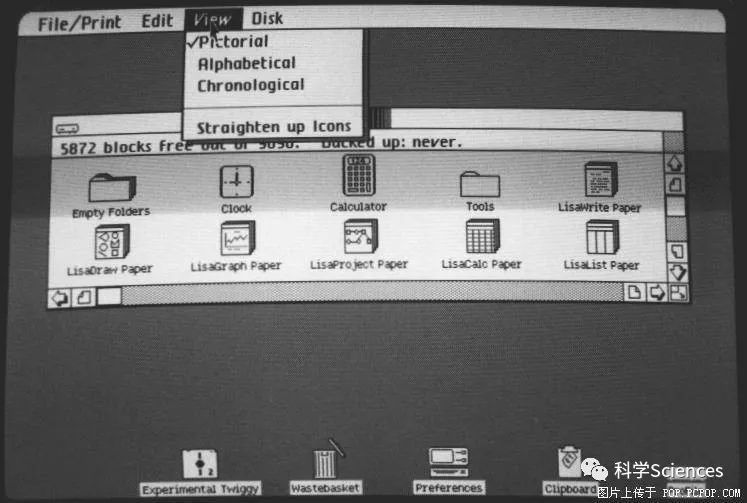
图47:1983年首款ibm pc图形软件环境--visi on
1983年,Visi推出visi On,第一款为IBM PC设计的集成图形软件环境,是IBM PC上的第一个图形界面的操作系统——VisiCorp Visi On (released in 1984),主要是给大公司用的,价格非常高昂。这个图形界面使用了鼠标,内置的安装程序以及帮助文档,但没有使用icon,如下图。
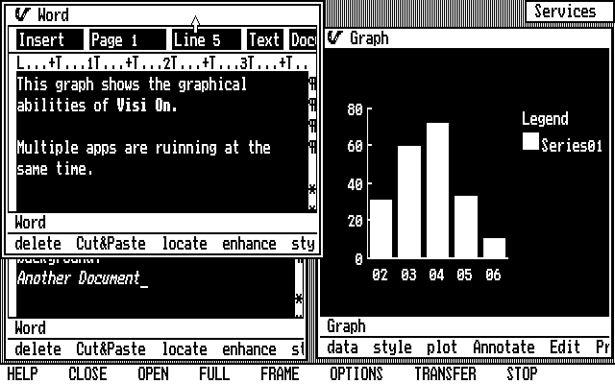

图48-49:VisiCoprt Visi On,Source: toastytech.com
1988年10月,IBM发布而OS/21.x (released in 1988)版本,操作系统的GUI又被叫作“PresentationManager”,是OS/2 1.10 Standard Edition新增加的图形用户界面(GUI),由微软开发的,看上去有点像Windows 2。这个版本的OS/2只支持很单一的色调和不能移动的图标。本来IBM和Microsoft在一起开发,但是1991年两个公司分道扬镳,微软做自己的Windows去了,而IBM继续开发OS/2。
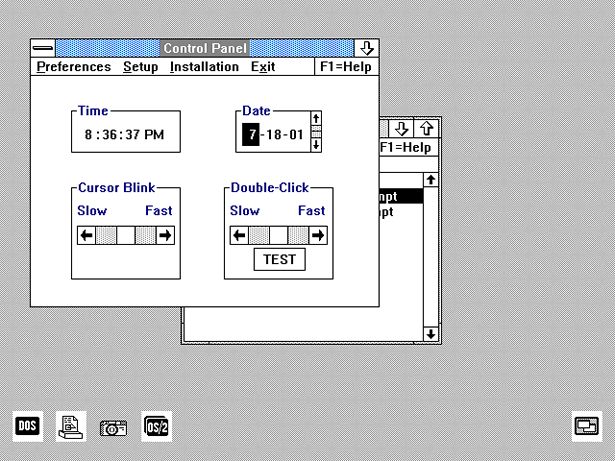
图50:1988年10月IBM发布Microsoft-IBM OS/2 1.1, Source: pages.prodigy.net
⑤ 微软的MS-DOS和MS-Windows
1980年,微软和IBM合作PC系统,微软以捆绑方式在IBM-PC上预装MS-DOS,廉价销售($5美元)许可证(license)。
1981年,微软创始人盖茨(Gates)被乔布斯(Jobs)邀请去苹果公司看Macintosh(麦金托什)样机,想让微软为其开发应用软件。盖茨看到Macintosh(麦金托什)的图形界面后,如同乔布斯看到Xerox图形界面一样也震惊了——心想,这东西要是上市,我微软主打产品MS-DOS立马完蛋,未来的天下是图形系统的。不过乔布斯看出了盖茨的心思,要求微软在给苹果开发软件过程中学到的东西,不能用于任何非苹果的设备上。但是乔布斯忽略了禁止微软编写类似Macintosh的系统——他没料到盖茨的雄心不比他小。当盖茨了解到Macintosh效法于施乐,于是回去后也像苹果一样从施乐挖人,开发自己的图形系统——Windows,并把MS-Windows的研发放在第一位,耽误了Macintosh的发布。
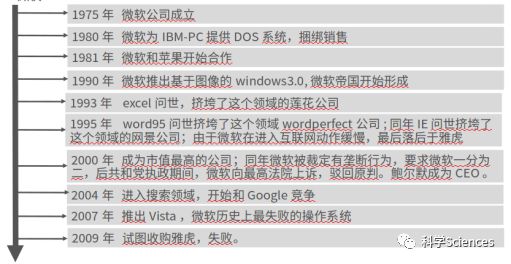
图51:微软Windows历史
1983年,微软宣布开始为IBM PC设计windows程序,系统特点:多窗口、可改变大小窗口。
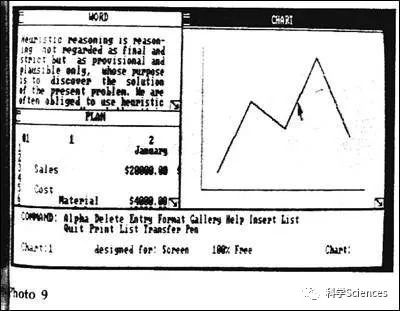
图52:1983年微软为ibm pc设计的windows程序
1985年8月,微软终于发布第一个windows版本——Windows 1.0x (released in 1985),特点:窗口不可重叠,但可平铺;窗口不会覆盖屏幕下方的图标区域。乔布斯发现这个MS-Windows很像麦金托什(Macintosh)界面,就说盖茨偷了苹果的东西。乔布斯和盖茨两位业界青年大佬,都意识到未来天下是图形操作系统的,先后挖施乐墙角、抄袭图形界面创意——那时版权法还没细致到保护创意!但今天的美国——版权保护作者身份的原创作品,而专利保护发明或发现。创意和发现不受版权法的保护,尽管它们的表达方式可能是受保护的。商标则保护识别一方商品或服务来源的单词、短语、符号或设计,并将其与其他商品或服务区别开来。Copyrightprotects original works of authorship, while a patent protects inventions ordiscoveries. Ideas and discoveries are not protected by the copyright law,although the way in which they are expressed may be. A trademark protectswords, phrases, symbols, or designs identifying the source of the goods orservices of one party and distinguishing them from those of others. [28]
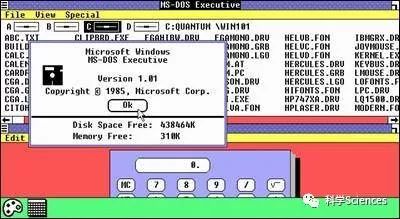
图53:1985年8月微软终于发布了首个windows版本
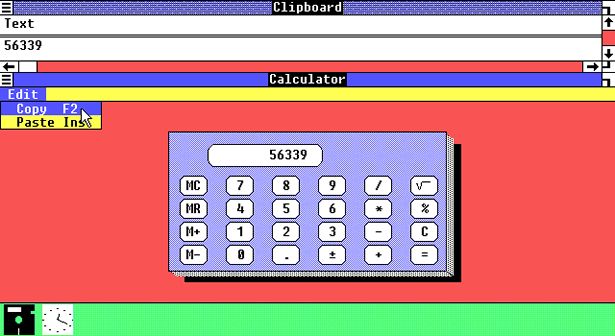
图54:Microsoft Windows 1.01,Source: makowski-berlin.de
微软作为一个图形界面的狂热者,在图形界面上的有着执着的热情,1985年,微软终于在图形用户界面大潮中占据了一席之地,Windows1.0是其第一款基于GUI的操作系统。使用了32×32像素的图标以及彩色图形,其最有趣的功能是模拟时钟动画图标。
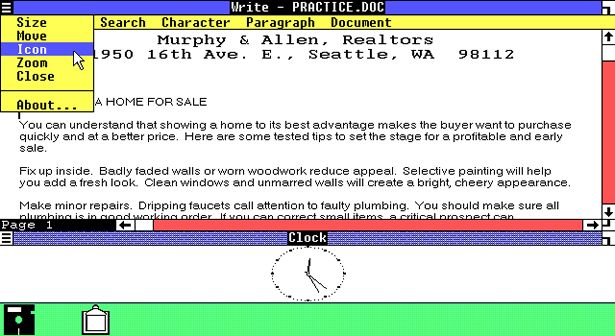
图55:Microsoft Windows 1.01,Source: makowski-berlin.de
1987年,微软发布第二个Windows版本,v2.03。特点:可改变大小/可重叠的窗口、加进了其他窗口控制功能。
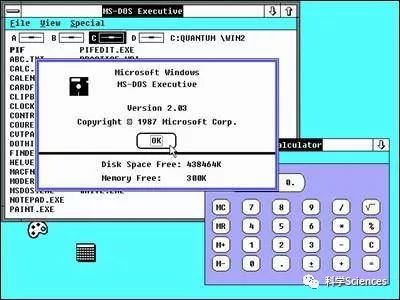
图56:1987年微软发布第二个windows版本-v2.03
⑥ MIT的Window System X窗口系统
1984年7月,MIT推出“Window System X”,1-6版本使用单色画,使用DECVS100显示器;发展到8-10版本使用彩色显示。它是运行在UNIX系统上的视窗系统。严格地说,X Window System并不是一个软件,而是一个协议,VAX StationII/gpx.X10是第一个被广泛使用的版本。第11个版本被设计成一个很高性能的系统,有很好的窗口管理风格,良好的图形表现和系统扩展能力。
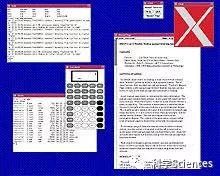
图57:1984年7月,MIT推出“window system x”
⑦ DR的Gem icon桌面系统
1984年9月,数字研究(Digital Research)公司针对8086和DOS的计算机,推出Gemicon/desktop用户界面系统,这个系统稍后演变为Atarist。DR是最早的大型微型计算机操作系统公司,有诸如CP/M operating system, Concurrent DOS, FlexOS, Multiuser DOS, DOSPlus, DR DOS and GEM等知名产品。
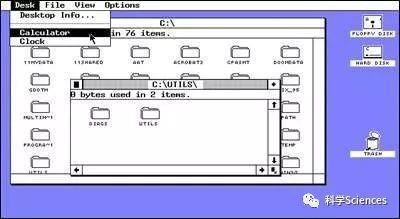
图58:1984年9月gem icon/desktop用户界面系统
1985年后,GE OS先后有了Commodore 64和Apple II上的版本。
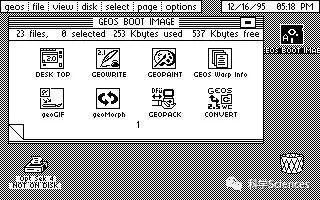
图59:Digital Research的Gem桌面系统和commodore 64
1986年,苹果(Apple)表示会控告数字研究(Digital Research)公司,因为其Gem桌面系统跟自己的Macintosh非常相像。数字研究(Digital Research)最终修改了自己的桌面系统。新的Gem桌面系统只有用两个无法移动、无法改变大小的窗口来浏览文件,如下图。
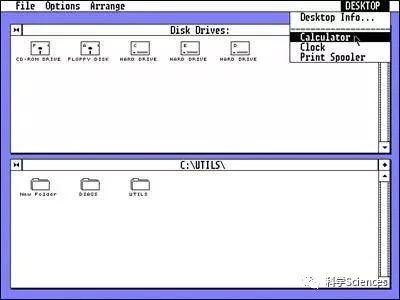
图60:1986年Apple表示会控告Digital Research
⑧ Commodore 64的Amiga 100系统
1985年7月,Commodore BusinessMachines(CBM)公司推出Amiga 100 (amiga workbench version 1.0)一举成名,成为计算机史上销售最多的单机系统。
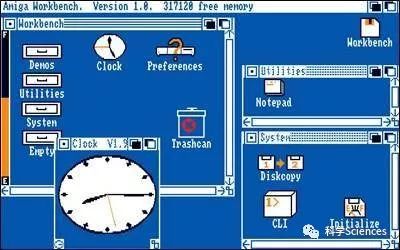
⑨ Acorn发布Arthur系统
1987年,Acorn发布应用于Acorn电脑的Arthur系统——RISC系统的基础,RISC OS 2和3和它有类似的外观,但有很大的改善。
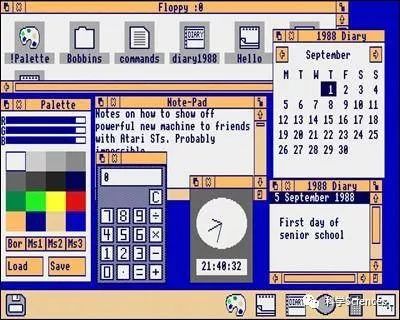
图62:1987年RISC系统的基础Arthur系统
⑩ 其它几百种可视化图形操作系统
1988年10月,NeXT Computer发布了元老品牌机,价格6500美元,使用:25MHz 30Processor,8MB RAM,250MB Optical DiskDrive,数字处理器,声卡,FaxModem,17寸显示器。Steve Jobs想给大学或研究实验室做一个完美的Research电脑,这个想法促成了NeXT Computer Inc.在1989年的时候发布了NeXTSTEP 1.0 GUI,后来被改名为OPENSTEP。——NeXT STEP / OPENSTEP 1.0 (released in 1989),该GUI的图标很大,48×48像素,包含更多颜色,一开始是单色的,从1.0开始支持彩色,下图中已经可以看到现代GUI的影子。下面是截屏:
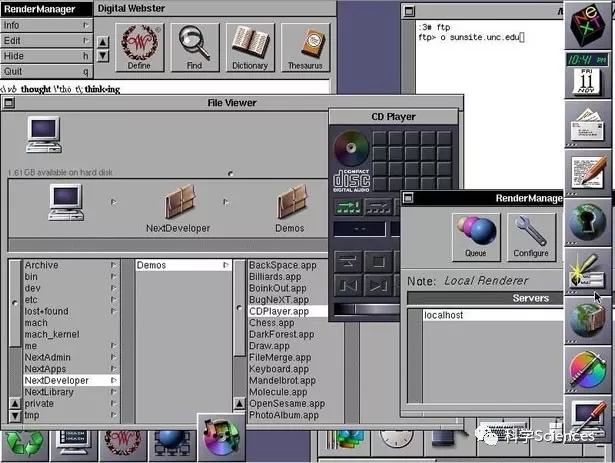
图63:1988年10月元老品牌机NeXTSTEP 1.0,Source: kernelthread.com
1990年,Commodore发布Amiga Workbench 2For A3000。特点:新3d效果,可定制菜单。
1990年5月,微软发布Windows3.0。特点:程序管理shell。
1990年11月,Geoworks发布PG-GEOS。
1992年春,IBM发布OS/2Version2.0——真正的32位操作系统。特点:workplace shell、面向对象的用户界面。
1992年3月,微软推出Windows3.1,界面跟3.0差不多,但这个版本包含了多媒体支持。,桌面有大家熟悉的三维曲线。
1992年5月,绝对炫的AmigaWorkbench 3发布。特点:使用图片做背景、色彩调节。颜色很丰富了。
1993年5月,微软发布WindowsNT第一个版本,是32位操作系统。同样使用3.1的版本号,它为intel,Power PC,Alpha和MIPS系统设计。
1994年,QnxSoftware Systems发布他们第一个微核心窗口操作系统:PhotonMicrogui。ps:生产amiga电脑极其操作系统的commodore公司于此年倒闭。
1995年8月24日,微软发布具有里程碑意义的Windows 95,值得纪念。
(其余配图请下载PDF查看)
1995年,Beos发布,这是第一个为定制的多处理器系统(Bebox)开发的操作系统,擅长于多媒体领域。
1996年,New Deal发布New Deal Office2.5,它的前身是PC-GEOS。
1996年,蓝色巨人IBM发布os/2 Warp 4,这个系统上Workplace Shell技术有重大应用。
1996年,微软发布Windows NT 4.0,它使用和Windows 95相同的用户界面
1997年6月,Mac OS 8发布。在两周内销售125万套,是那个时期销售最好的操作系统。
1998年7月25日,微软发布windows 98。熟悉的温酒吧来了,别跟我说,你不知道它!特点:IE浏览器取代了windows shell和帮助系统。
1999年,Apple发布Mac Os X Server,是基于Unix的操作系统,使用Macintosh GUI。
1999年7月,RISC OS Ltd发布RISC OS 4,使用于RISC PC A7000或A7000+。
2000年1月5日,Apple发布Aqua,唯美风格开始。
2000年2月17日,微软发布Windows2000(Aka Windows NT 5)——迄今最稳定的Windows系统,相信现在还有人在用。
2001年10月25日,微软发布Windows Xp(AkaWindows Nt 5.1)。特点:激活技术登场了...汗,逼着第三世界用d版,-___-!!!
2003年4月24日,微软发布Windows Server2003(Aka Windows NT 5.2,也叫windows.NetServer)。特点:只发布服务器版本。
美国计算机行业不断创新发展,重视技术的公司数以千万,抓住电子计算机这个世上最强大的信息处理工具带来的机遇,提高了整体社会工作和运行效率。这期间,技术和科学创新不断推动操作系统发展。从早期操作系统(专利保护),到非Unix商业操作系统和Unix及类似系统,苹果,IBM,微软,Novell,NeXT,Prime Computer,西门子等公司崛起。伴随着最早流行开的Commodore公司PET、64和VIC-20电脑,第一套IBM-PC、苹果电脑,Sinclair Micro和QX等非Unix商业操作系统;TRS-DOS,ROM OS's,TI99-4,CPM操作系统,MP/M-80,UCSD P-system,Mini-FLEX,SSB-DOS,CP/M-86,DR-DOS,FreeDOS,MS-DOS,PC-DOS,Mach,CHORUS,Choices,Multics,OS-9,NSJ,Unix及类似系统,UNIX,微软Xenix,ChorusOS,Cromix,UNIflex,OS-9,IBM的AIX,BSD,FreeBSD,NetBSD,OpenBSD,DragonflyBSD,Digital UNIX,即之后康柏Tru64,DNIX,HP的HP-UX,GNU/Hurd,SGI的IRIX,Linux(或称GNU/Linux),Mac OS X,MenuetOS,Minix,OSF/1,SCO的SCO UNIX,Sun的SunOS,即之后的Solaris,System V,Ultrix,UniCOS,LindowsOS,OS/390,z/OS,Syllable;,个人电子助理(PDA)操作系统,智能手机操作系统和其他操作系统。
其中,著名的操作系统还有:Acorn,Arthur,ARX,RISC OS,RISCiX,Amiga,AmigaOS,Atari ST,TOS,MultiTOS,MiNT;苹果电脑(Apple/Macintosh)公司的Apple DOS,ProDOS,Mac OS,Mac OS X;BE,BeOS,BeIA;Digital/康柏(Compaq)公司的AIS,OS-8,RSTS/E,RSX-11,RT-11,TOPS-10,TOPS-20,VMS(后更名为OpenVMS);IBM(国际商用机器)公司的OS/2,AIX,OS/400,OS/390,VM/CMS,DOS/VSE,VSE/SP,VSE/ESA,OS/360,MFT,MVT,SVS,MVS,TPF,ALCS,z/OS,PC-DOS;微软(Microsoft)公司的MS-DOS,Xenix,Microsoft Bob,Windows,Windows 1.0,Windows 2.0,Windows 3.1,Windows 95,Windows 98,Windows ME,Windows NT,Windows NT 3.5,Windows NT 4,Windows 2000,Windows XP,Windows XP MediaCenter Edition,WindowsXP Professional x64 Edition,WindowsServer 2003,WindowsServer 2003 64-bit Edition,WindowsVista;Novell公司的NetWare;Unixware,SUSE Linux;NeXT公司的NeXTStep(即之后的Mac OS X),Plan 9,Inferno,Prime Computer,Primos,西门子,BS2000;个人电子助理(PDA)操作系统Palm OS,Pocket PC,EPOC,Microsoft WindowsCE,Linux;智能手机操作系统WindowsMobile系列,EmbeddedLinux由Montavista创造,在Motorola's A760、E680等机型上使用,Mobilinux由Montavista创造,Symbian OS系列;其他操作系统、动态可扩展操作系统,如MIT的Exo Kernel,华盛顿大学的SPIN,哈佛大学的VINO,伊利诺伊(Illinois)大学的Choices等等。[29]
但在中国呢?和美国同时期的中国在奋力解决吃住等生存问题。至今高端信息科技方面依然空白,少数存在装点门面的伪IT企业也是市场应用导向公司,鲜有真技术。高昂的房地产吃住教育成本,让普通大众一辈子无法翻身,除了生存必备相关之外的一切行业连个办公场所都负担不起。
4.2 操作系统产品时间线OperatingSystems Product Timeline
本文介绍了1960年至2003年计算机操作系统历史事件的时间表。有关解释整体发展的叙述,请参阅相关的计算历史。Thisarticle presents a timeline of events in the history of computer operatingsystems from 1960 to 2003. For a narrative explaining the overall developments,see the related History of computing. [30]
① 操作系统时间线Operating Systems Timeline
1961的CTSS;
1964的OS/360 (announced);
1965的Multics(announced)和OS/360(shipped)和TapeOperating System (TOS);
1966的MS/8;
1967的CP/CMS和ITS和WAITS;
1969的ACP (IBM)和TENEX和Unix;
1970的DOS/BATCH 11(PDP-11);
1971的/A>;
1972的MFT、MVT、RDOS、SVS和VM/CMS;
1973的Alto OS、RSX-11D、RT-11和VME;
1974的MVS (MVS/XA);
1976的/A> TOPS-20;
1978的Apple DOS 3.1(first Apple OS)、TripOS和VMS;
1979的Apple DOS 3.2;
1980的Apple DOS 3.3、OS-9、QDOS、SOS、XDE (Tajo) (XeroxDevelopment Environment)和Xenix;
1981的MS-DOS;
1982的SunOS (1.0)和Ultrix;
1983的Lisa OS、Coherent和ProDOS;
1984的Macintosh OS(System 1.0)、QNX和UniCOS;
1985的AmigaOS、Atari TOS、MIPS OS和Microsoft Windows1.0;
1986的GS-OS和HP-UX;
1987的Arthur、IRIX (3.0 is firstSGI version)、Minix和/A> (1.0)Microsoft Windows 2.0;
1988的A/UX (AppleComputer)、LynxOS、MVS/ESA和OS/400;
1989的AIX、NeXTSTEP (1.0)、RISC OS和SCO Unix (release3);
1990的BeOS (v1)和O/A>;
1991的Linux;
1992的Solaris (2.0 is firstnot called SunOS)和Windows3.1;
1993的Plan 9、FreeBSD、NetBSD和Windows NT 3.1(First version of NT);
1995的Digital Unix (akaTru64 )、OpenBSD、OS/390和Windows 95;
1997的Mac OS 7.6 (firstofficially-named Mac OS);
1998的Windows 98;
1999的Mac OS 8;
2000的AtheOS、Mac OS 9、Windows 2000和Windows ME;
2001的Mac OS X、Windows XP和z/OS;
2002的Syllable;
2003的Windows Server2003和Externallinks;
② 操作系统简史(英文版)
1970Development of UNIX operating system started. It was later released as C sourcecode to aid portability, and subsequently versions are obtainable for manydifferent computers, including the IBM PC. It and it’s clones (such as Linux)are still widely used on network and Internet servers. Originally developed byKen Thomson and Dennis Ritchie.
1975Unix marketed (see 1970).
1980- October Development of MS-DOS/PC-DOS began. Microsoft (known mainly for theirprogramming languages) were commissioned to write the Operating System for thePC, Digital Research failed to get the contract (there is much legend as to thereal reason for this). DR’s Operating System, CP/M-86 was later shipped but itwas actually easier to adapter programs to DOS rather than CP/M-86, and CP/M-86cost $495. As Microsoft didn’t have an operating system to sell they boughtSeattle Computer Product’s 86-DOS which had been written by Tim Patersonearlier that year (86-DOS was also know as Q-DOS, Quick & Dirty OperatingSystem, it was a more-or-less 16bit version of CP/M). The rights were actuallybought in July 1981. It is reputed that IBM found over 300 bugs in the codewhen they subjected the operating system and re-wrote much of the code.
TimPaterson’s DOS 1.0 was 4000 lines of assembler.
1981- August 12 MS-DOS 1.0., PC-DOS 1.0.
Microsoft(known mainly for their programming languages) were commissioned by IBM towrite the operating system, they bought a program called 86-DOS from TimPaterson which was loosely based on CP/M 80. The final program from Microsoftwas marketed by IBM as PC-DOS and by Microsoft as MS-DOS, collaboration onsubsequent versions continued until version 5.0 in 1991.
Comparedto modern versions of DOS version 1 was very basic, the most notable differencewas the presence of just 1 directory, the root directory, on each disk.Subdirectories were not supported until version 2.0 (March, 1983).
MS-DOS(and PC-DOS) was the main operating system for all IBM-PC compatible computersuntil 1995 when Windows ’95 began to take over the market, and Microsoft turnedits back on MS-DOS (leaving MS-DOS 6.22 from 1993 as the last version written -although the DOS Shell in Windows ’95 calls itself MS-DOS version 7.0, and hassome improved features like long filename support). According to Microsoft, in1994, MS-DOS was running on some 100 million computers world-wide.
1982- March MS-DOS 1.25, PC-DOS 1.1
1983- March MS-DOS 2.0, PC-DOS 2.0
Introducedwith the IBM XT this version included a UNIX style hierarchical sub-directorystructure, and altered the way in which programs could load and access files onthe disk.
1983- May MS-DOS 2.01
1983- October PC-DOS 2.1 (for PC Jr). Like the PC Jr this was not a great successand quickly disappeared from the market.
1983- October MS-DOS 2.11
1984- August MS-DOS 3.0, PC-DOS 3.0
Releasedfor the IBM AT, it supported larger hard disks as well as High Density (1.2 MB)5¼" floppy disks.
1985- March MS-DOS 3.1, PC-DOS 3.1
Thiswas the first version of DOS to provide network support, and provides some newDangerCodes to handle networking.
1985- October Version 2.25 included support for foreign character sets, and wasmarketed in the Far East.
1985- November Microsoft Windows Launched. Not really widely used until version 3,released in 1990, Windows required DOS to run and so was not a completeoperating system (until Windows ’95, released on August 21, 1995). It merelyprovided a G.U.I. similar to that of the Macintosh., in fact so similar thatApple tried to sue Microsoft for copying the ’look and feel’ of their operatingsystem. This court case was not dropped until August 1997.
1985- December MS-DOS 3.2, PC-DOS 3.2
Thisversion was the first to support 3½" disks, although only the720KB ones. Version 3.2 remained the standard version until 1987 when version3.3 was released with the IBM PS/2.
1987Microsoft Windows 2 released. It was more popular than the original version butit was nothing special mind you, Windows 3 (see 1990) was the first reallyuseful version.
1987- April MS-DOS 3.3, PC-DOS 3.3
Releasedwith the IBM PS/2 this version included support for the High Density (1.44MB)3½" disks. It also supported hard disk partitions, splitting ahard disk into 2 or more logical drives.
1987- April OS/2 Launched by Microsoft and IBM. A later enhancement, OS/2 Warpprovided many of the 32-bit enhancements boasted by Windows ’95 - but severalyears earlier, yet the product failed to dominate the market in the way Windows’95 did 8 year later.
1987- October/November Compaq DOS (CPQ-DOS) v3.31 released to cope with diskpartitions >32MB. Used by some other OEMs, but not distributed by Microsoft.
1988- July/August? PC-DOS 4.0, MS-DOS 4.0
Version3.4 - 4.x are confusing due to lack of correlation between IBM & Microsoftand also the USA & Europe. Several ’Internal Use only’ versions were alsoproduced.
Thisversion reflected increases in hardware capabilities, it supported hard drivesgreater than 32 MB (up to 2 GB) and also EMS memory.
Thisversion was not properly tested and was bug ridden, causing system crashes andloss of data. The original release was IBM’s, but Microsoft’s version 4.0 (inOctober) was no better and version 4.01 was released (in November) to correctthis, then version 4.01a (in April 1989) as a further improvement. However manypeople could not trust this and reverted to version 3.3 while they waited for thecomplete re-write (version 5 - 3 years later). Beta’s of Microsoft’s version4.0 were apparently shipped as early as ’86 & ’87.
1988- November MS-DOS 4.01, PC-DOS 4.01
Thiscorrected many of the bugs seen in version 4.0, but many users simply switched backto version 3.3 and waited for a properly re-written and fully tested version -which did not come until version 5 in June 1991. Support for disk partitions>32Mb.
1990- May 22 Introduction of Windows 3.0 by Bill Gates & Microsoft. It is truemultitasking (or pretends to be on computers less than an 80386, by operatingin ’Real’ mode) system. It maintained compatibility with MS-DOS, on an 80386 iteven allows such programs to multitask - which they were not designed to do.This created a real threat to the Macintosh and despite a similar product,IBM’s OS/2, it was very successful. Various improvements were made, versions3.1, 3.11 - but the next major step did not come until Windows ’95 in 1995which relied much more heavily on the features of the 80386 and providedsupport for 32 bit applications.
1991- June MS-DOS 5.0, PC-DOS 5.0
Inorder to promote OS/2 Bill Gates took every opportunity after it’s release tosay ’DOS is dead’, however the development of DOS 5.0 lead to the permanentdropping of OS/2 development.
Thisversion, after the mess of version 4, was properly tested through thedistribution of Beta versions to over 7,500 users. This version included theability to load device drivers and TSR programs above the 640KB boundary (intoUMBs and the HMA), freeing more RAM for programs. This version marked the endof collaboration between Microsoft and IBM on DOS.
1991- August Linux is born with the following post to the Usenet Newsgroupcomp.os.minix:
Helloeverybody out there using minix-
I’mdoing a (free) operating system (just a hobby, won’t be
bigand professional like gnu) for 386(486) AT clones.
Thepost was by a Finnish college student, Linus Torvalds, and this hobby grew fromthese humble beginnings into one of the most widely used UNIX-like operatingsystems in the world today. It now runs on many different types of computer,including the Sun SPARC and the Compaq Alpha, as well as many ARM, MIPS,PowerPC and Motorola 68000 based computers.
In1992, the GNU project (http://www.gnu.org/) adopted the Linux kernel for use onGNU systems while they waited for the development of their own (Hurd) kernel tobe completed. The GNU project’s aim is to provide a complete and free UNIX likeoperating system, combining the Linux or Hurd platform with the a completesuite of free software to run on it. In order to allow it to carry the GNUname, the Linux kernel copyright was changed to the GNU Public LicenseAgreement (http://www.gnu.org/copyleft/gpl.html) on the 1st of February 1992.
1992- April Introduction of Windows 3.1
1993- December MS-DOS 6.0. This included a Hard-Disk compression program calledDoubleSpace, but a small computing company called ’Stac’ claimed thatDoubleSpace was partly a copy of their Compression Program, Stacker. Afterpaying damages Microsoft withdrew DoubleSpace from MS-DOS 6.2, releasing a newprogram - DriveSpace - with MS-DOS version 6.22. In operation and programminginterface DriveSpace remains virtually identical to DoubleSpace. MS-DOS 6.22remains the last version of MS-DOS released, since Microsoft turned its effortsto Windows ’95. Windows ’95 (and later) DOS shell reports itself as DOS 7 - andincludes a few enhancements, e.g. support for long filenames.
1994- March 14 Linus Torvalds released version 1.0 of the Linux Kernel.
1994- September PC-DOS 6.3 Basically the same as version 5.0 this release by IBMincluded more bundled software, such as Stacker (the program that causedMicrosoft so much embarrassment) and anti-virus software.
1995- March Linus released Linux Kernel v1.2.0 (Linux’95).
1995- August 21 [poss. 23] Windows ’95 was launched by Bill Gates & Microsoft.Unlike previous versions of Windows, Windows ’95 is an entire operating system- it does not rely on MS-DOS (although some remnants of the old operatingsystem still exist). Windows ’95 was written specially for the 80386 andcompatible computers to make ’full’ use of its 32 bit processing and multitaskingcapabilities, and thus is much more similar to Windows NT than Windows 3.x.Windows 95 and NT 4 are almost indistinguishable in many respects - such asUser Interface and API. Unfortunately, in order to maintain backwardscompatibility, Windows 95 doesn’t impose the same memory protection andsecurity measures that NT does and so suffers from much worse reliability.Despite being remarkable similar in DangerCode to OS/2 Warp (produced by IBMand Microsoft several years earlier, but marketed by IBM), Windows ’95 hasproved very popular.
1996Windows ’95 OSR2 (OEM System Release 2) was released - partly to fix bugs foundin release 1 - but only to computer retailers for sale with new systems. Therewere actually two separated releases of Windows 95 OSR2 before the introductionof Windows ’98, the second of which contained both USB and FAT32 support - themain selling points of Windows ’98. FAT32 is a new filing system that providessupport for disk paritions bigger than 2.1GB and is better at coping with largedisks (especially in terms of wasted space).
1996- June 9 Linux 2.0 released. 2.0 was a significant improvement over the earlierversions: it was the first to support multiple architectures (originallydeveloped for the Intel 386 processor, it now supported the Digital Alpha andwould very soon support Sun SPARC many others). It was also the first stablekernel to support SMP, kernel modules, and much more.
1998- June 25 Microsoft released Windows ’98. Some U.S. attorneys tried to blockit’s release since the new O/S interfaces closely with other programs such asMicrosoft Internet Explorer and so effectively closes the market of suchsoftware to other companies. Microsoft fought back with a letter to the WhiteHouse suggesting that 26 of it’s industry allies said that a delay in therelease of the new O/S could damage the U.S. economy. The main selling pointsof Windows ’98 were it’s support for USB and it’s support for disk paritionsgreater than 2.1GB.
1999- Jan 25 Linux Kernel 2.2.0 Released. The number of people running Linux isestimated at over 10million, making it an not only important operating systemin the Unix world, but an increasingly important one in the PC world.
2000- Feb 17 Offical Launch of Windows 2000 - Microsoft’s replacement for Windows95/98 and Windows NT. Claimed to be faster and more reliable than previousversions of Windows. It is actually a descendant of the NT series, and so thetrade-off for increased reliability is that it won’t run some old DOS-basedgames. To keep the home market happy Microsoft have also released Windows ME,the newest member of the 95/98 series.
2001- Jan 4 Linux kernel 2.4.0 released.
2001- March 24 Apple released MacOS X. At it’s heart is `Darwin’, an Open Sourcekernel based on FreeBSD. Using this MacOS X finally gives Mac users thestabilty benifits of a protected memory architecture along many otherenhancements, such as preemptive multitasking. The BSD base also makes portingUNIX applications to MacOS easier and gives Mac users a fully featured commandline interface alongside their GUI.
2001- October 25 Microsoft released Windows XP - the latest version of theirWindows operating system. Based on the NT series kernel, it is intended tobring together both the NT/2000 series and the Windows 95/98/ME series into oneproduct. Of, course, it was originally hoped that this would happen withWindows 2000 ... so only time will tell if Microsoft have suceeded with WindowsXP.
4.3 开源Linux诞生与演进
从上世纪80年代中后期开始,大量的基于可视化操作界面的系统问世后,操作系统真正普及开来。不过,可视化的操作系统是直接装在机器上的,它在降低了用户使用门槛的同时,也封闭了内在复杂的软件设计。这对于具有骇客精神的学院派老师、学生来讲,难以看到其被隐藏的具体设计。由此,基于开源的操作系统Linux出现了。1991年,在赫尔辛基上大学的林纳斯·托瓦兹,参照Unix和Minix,重写了一个初始的Linux系统,并于10月5日发布了第一版0.01版。1993年,大约有100余名程序员参与了Linux内核代码编写/修改工作,其中核心组由5人组成,此时Linux 0.99的代码大约有十万行,用户大约有10万左右。到2019年,Linux 最新内核发布,此内核有大约2500万行代码。
① 开源Linux系统的特点
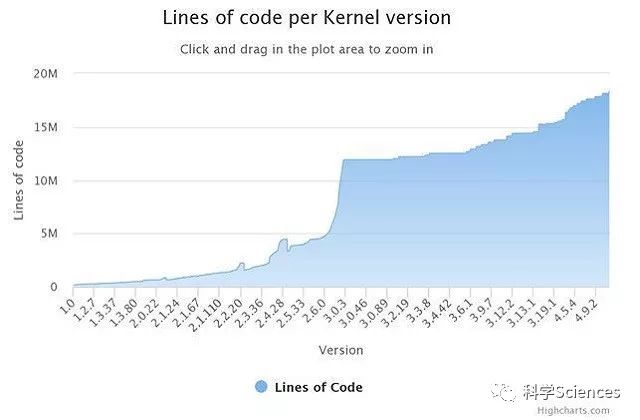
有别于Unix的闭源(代码不可获得),Linux系统遵循开源协议,意味着任何人都可以获取和编辑代码,进行修改。因此,Linux获得了极大的关注和应用推广。由于全世界系统爱好者、使用者的参与,到Linux内核4.9.2版本时,Linux内核源代码量超过1800万行(目前最新版本超过2500万行)。
通过微软Windows系统研发对比,评估这些代码的研发投入。微软的WindowsVista 大约5000万行代码,其研发投入超过65亿美元。几千万行代码的时间投入是个什么概念呢?
以国产的金山办公软件WPS为例,WPS的代码量约150万行,开发耗时3年。从这个研发成本角度看,我们的系统采取完全自研的方式,不如直接拥抱Linux开源社区,毕竟,站在巨人的肩膀上更有效。当前市场上主流的系统占比分布是怎样的?下图给出了答案:

Windows系统仍然是市场的主流。虽然Linux的发展历程很振奋人心,但是市场上的占有率实际上只有1.61%(如果将谷歌的Chrome OS也看作Linux的一部分,则合起来是2.78%)。
那微软构建这个占据市场主流的操作系统付出了多大代价呢?
下图展示了微软公司从2002年到2018年的研发费用。需要说明的是,微软的研发包括三部分:操作系统的开发、配套该操作系统的各种应用、驱动等围绕系统的生态圈建设费用。
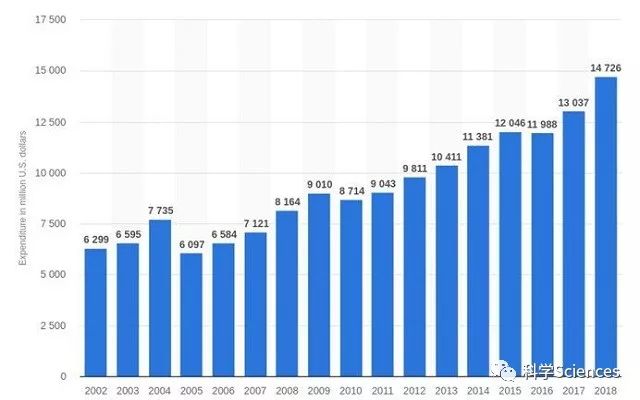
其中,2018年的花费超过147亿美元,折合人民币约1020亿。
另外,需要指出的是,微软的Windows系统在占据主要市场份额的情况下,每年仍然投入超过千亿人民币的研发费用,这也为市面上的系统竞争设置了超高门槛。
② 开源社区中国贡献者
当前开源社区,中国力量又是怎样一个现状呢?首先,早在1999年7月,几个年轻的创业者做出第一个在framebuffer(Linux为显示设备提供的一个接口)上进行汉化的中文版本蓝点Linux(BluepointLinux)。不过,因为没有坚持在操作系统方向进行持续深耕,蓝点公司的Linux系统最终消亡。除此之外还有如红旗Linux(诞生于1999年8月),中软Linux版本(发布于1999年9月)。但是因为在使用体验上不如Windows,没有市场的支持,最终没有成熟强大起来。
不过,随着我国庞大IT从业者的崛起,情况有了根本性变化。在此以Linux5.1内核贡献为例:
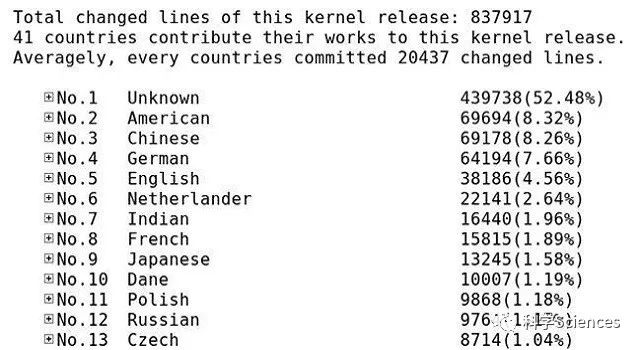
我们拉取了Linux内核贡献度超过1%的国家统计数据,发现:美国第一,中国第二(注:第一名未知范畴,不作为真实有效国家)。以公司为维度来看,中国的华为公司对Linux的贡献度排在第三位(注:第一名属于未知范畴,不算有效公司名,其排序参见下图)。
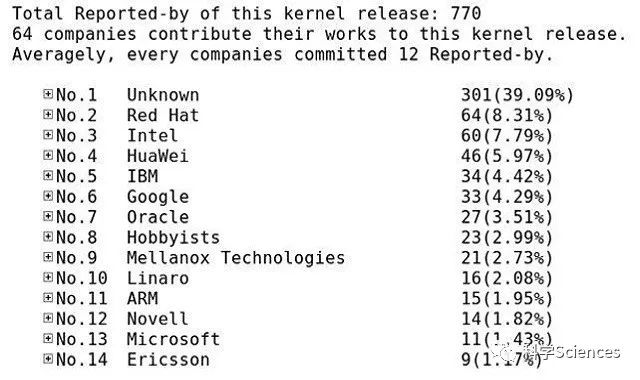
据财报显示,华为在2018年的研发投入也超过了千亿人民币(1015亿)。由此可见,华为面对谷歌的系统封杀,是有底气的。从另外一个角度看,我们的企业也有很长的路要走,希望能有更多的企业榜上有名,只有那样,我们的自主操作系统才算是稳了。
③ 华为鸿蒙系统的诞生
前面我们提到日本在1984年提出了Tron系统规范,目的是创作出一个开源的的、可用的操作系统,从而减少对美国Windows系统的依赖。Tron系统原型机于1987年完成,但是该系统没有像预想的那样成为像Windows一样的替代品。
日本Tron操作系统的发展受到美国政府的打压,导致其没有在人机交互的场景上继续发展。
也许你会问:日本的Tron操作系统为什么被打压呢?
要了解这个根源,首先我们要了解另外一个基础:芯片。
我们知道,操作系统好比是人的灵魂,芯片好比大脑。软件和硬件结合才能产生真正的生产力。而日本在80年代的时候,“芯片产业正处于高峰时期,占据全球近80%的DRAM(俗称电脑内存)份额,硅谷的英特尔、AMD等科技创业公司在半导体存储领域,被日本人追着打,然后被反超,被驱离王座,半导体芯片领域(当时主要是半导体存储占据主流)成为日本企业后花园。”
日本的芯片实力已经开始碾压以美国为首的西方世界了,这个时候如果软件也取得突破性进展,那西方世界的科技市场将面临全面碾压。日本彼时提出的Tron系统,对美国来讲是完全不可接受的,也因此在美国对日本实施的超级301法案中明确要求,不允许Tron系统安装在学校中。因为,它很有可能带来另外一个版本的Unix发展史。
现在来看,美国对日本芯片和软件两方面的打压,是不是和当前华为被禁止使用美国芯片、软件是一样的套路呢?
我想,这也是华为公司未雨绸缪地布局鸿蒙系统开发的主因。
单纯的操作系统技术,相信国内是有能力了解并吃透的。但是如何在开辟新系统的同时,又能持续保住曾经的消费市场,才是考验公司能力的地方。这一点,华为的策略相当让人惊艳。
华为是怎么应对的呢?
华为的系统变革让普通用户无感知,因此不会影响到用户对系统的使用体验。华为的EMUI系统的开发和迭代都是经过多年的深耕,将安卓系统进行深度的解耦合,碎片化替换,完成系统的优化和逐步升级。
例如,华为贡献给安卓开源社区的EROFS文件系统,就是其中的一部分。华为的系统类似采取了飞行过程中换零件的策略,让用户在无感知的情况下,在每一次的升级过程中替换一个优化模块,而这些模块都是鸿蒙系统的一部分经验总结。
在这里,也不得不提一下华为的方舟编译器,方舟编译器对于普通人来说也就是个编译工具,但实际上它对一个新系统是至关重要的。一个操作系统是否健壮,要看其对底层硬件的利用程度。
拿汽车来比喻,系统构建好比是汽车引擎的构建,编译器好比是制作汽油的设备。好的编译器好比能直接生产出98号汽油,从而让你的机器快到飞起来。
编译器能否设计好,首先就要考量你对手机硬件的理解程度。从这个角度看,华为在系统构建层面是有信心的。然而,仅有这些还是不够的。华为的鸿蒙系统如何能流畅的兼容安卓生态圈,才是需要深思的地方。
和30多年前相比,中国和日本的境遇虽然相似,但是市场、外部环境却大不相同,让我们对后面鸿蒙系统的发展拭目以待。
操作系统这类复杂大型软件的生产,变成完全需要研发、投入、逐步优化的软硬件科技领域。操作系统的研发、协作、开放变得越来越多,越来越快,投入的人和资金也越来越多。
PS: thks4 ur support^_^
素材(5k字)
1. Wikipedia. Operating system - Wikipedia.[EB/OL], Wikipedia, https://en.wikipedia.org/wiki/Operating_system, visit date:2019-06-18Tue
2. Wikipedia. History of operating systems.[EB/OL], Wikipedia, https://en.wikipedia.org/wiki/History_of_operating_systems, visit date:2019-06-18Tue
3. Kent State University. History ofOperating Systems. [EB/OL], Kent State University,http://www.personal.kent.edu/%7Ermuhamma/OpSystems/Myos/osHistory.htm, visit date:2019-06-18Tue
4. Dietel, H. M., "Operating Systems", 2nd ed. Addison-Wesley,Reading, MA, 1992.
5. Finkel, R.A., "An Operating Systems Vade Mecum", 2nd ed.Prentice-Hall, Englewood Cliffs, NJ, 1988.
6. Goscinski, Andrzej, "Distributed Operating Systems : the logical design".
7. Hartley, Stephen. J. "Operating Systems Programming".
8. Krakowiak, S, "Principles of Operating Systems", MIT Press,1988.
9. Lane, M.G. and Mooney, J.D, "A Practical Approach to OperatingSystems", Boyd and Fraser, 1988.
10. Milenkovic, M., "Operating Systems: Concept and Design",2nd ed. McGraw-Hill, 1992.
11. Silberschatz, A. and Peterson, James, L., "Operating System Concepts",1983.
12. Silberschatz, A. and Galvin, P.B., "Operating System Concepts", 4th ed. Addison-Wesley, Reading,MA, 1994.
13. Sinha, Pradeep K., "Distributed Operating Systems".
14. Singhal, Mukesh and Shivaratri, "Advanced Concepts in OperatingSystems".
15. Stallings, W, "Operating Systems", Macmillan, New York,1992.
16. Tanenbaum, Andrew S., "Modern Operating Systems", 现代操作系统(荷), Prentice-Hall, EnglewoodCliffs, NJ, 1992.
17. Tanenbaum, Andrew S., "Operating Systems : Design andImplementation".
18. Gerard Tel, "Introduction to Distributed Algorithms".
19. By Gary Anthes. Unix turns 40: The past, presentand future of a revolutionary OS S. [EB/OL], Computerworld,https://www.computerworld.com/article/2524456/unix-turns-40--the-past--present-and-future-of-a-revolutionary-os.html,June 04, 2009 01:01 AM PT, visit date: 2019-06-18Tue
20. blackberry. QNX OS. [EB/OL], qnx,http://www.qnx.com/download/group.html?programid=29178, visit date:2019-06-18Tue
21. qnx. pps: OS Core Components=>Samplepublishers and subscribers. [EB/OL], qnx,http://support7.qnx.com/download/download/30066/QNX_Persistent_Publish_Subscribe_Developers_Guide.pdf,visit date: 2019-06-18Tue
22. qnx. Building QNX OS Images. [EB/OL], qnx,http://www.qnx.com/developers/docs/7.0.0/#com.qnx.doc.ide.userguide/topic/sysbuilder.html,visit date: 2019-06-18Tue
23. 李科男, 百度高级研发工程师. 【OS】QNX车载实时微内核操作系统简介及开发环境搭建. [EB/OL], zhihu, https://zhuanlan.zhihu.com/p/46528076, visit date:2019-06-18Tue
24. 锋影Q. 五大车载操作(VOS)系统优劣对比,车载系统架构分析-QNX系统性能分析. [EB/OL], csdn,https://blog.csdn.net/xjhhjx/article/details/77133290, 2017-08-13 08:32:28,visit date: 2019-06-18Tue
25. chaofanwei. unix分支以及分类. [EB/OL], csdn,https://blog.csdn.net/chaofanwei/article/details/17223773, 2013-12-09 16:01:45, visit date:2019-06-18Tue
26. 词条统计:浏览1458830次,编辑159次历史版本,最近更新:许喆昱(2019-06-15). Mac OS. [EB/OL], baike,https://baike.baidu.com/item/Mac%20OS, 2019-06-15, visitdate: 2019-06-18Tue
27. Mark Dean(IBM院士,技术战略与全球运作副总裁). IBM100: PC个人计算已发展成熟. [EB/OL], ibm, https://www-31.ibm.com/ibm/cn/ibm100/icons/personalcomputer/index.shtml, visit date:2019-06-18Tue
28. U.S. Copyright Office. Copyright in General:How is a copyright different from a patent or a trademark? [EB/OL], copyright, https://www.copyright.gov/help/faq/faq-general.html#what, visit date:2019-06-18Tue
29. Timeline of UNIX history操作系统简史(英文版) . [EB/OL], levenez, http://www.levenez.com/unix/, visit date:2019-06-18Tue
30. operating system. [EB/OL], encyclopedia4u, http://www.encyclopedia4u.com/, visit date:2019-06-18Tue
31. 百度经验>游戏/数码>电脑>电脑软件. 操作系统的发展史. [EB/OL], baidu,https://jingyan.baidu.com/article/a378c9600973fbb3282830bb.html, 更新:2019-02-25 15:56, visit date:2019-06-18Tue
32. 词条标签:科学,学科;词条统计:浏览103189次,编辑11次历史版本,最近更新:w_ou(2018-08-11). 操作系统发展史. [EB/OL], baike, https://baike.baidu.com/item/操作系统发展史,2018-08-11, visit date: 2019-06-18Tue
33. 志艺. 操作系统基础知识——操作系统发展简史. [EB/OL], 学习啦, http://mip.xuexila.com/diannao/xitong/zonghe/2779702.html,2017-03-09 10:53:27, visit date: 2019-06-18Tue
34. 追梦的肥猪. Python3-操作系统发展史. [EB/OL], cnblogs, https://www.cnblogs.com/Xuuuuuu/p/10330635.html,2019-01-28 16:08, visit date: 2019-06-18Tue
35. 小李超人. 操作系统发展史——什么是操作系统. [EB/OL], 博客园,https://www.cnblogs.com/xiaolichaoren/p/5792349.html, 2016-08-21 11:19, visit date:2019-06-18Tue
36. 奋---勤能补拙. 40款你未必知道的图形界面操作系统. [EB/OL], cnblogs, https://www.cnblogs.com/chio/articles/1020081.html, 2007-12-29 15:36,visit date: 2019-06-18Tue
37. 郑清正(苏宁金融研究院数据风控实验室首席研究员), 苏宁财富资讯原创,来源:钛媒体. 世界操作系统发展简史.[EB/OL], 凤凰网科技, http://tech.ifeng.com/a/20190617/45509007_0.shtml,2019-06-17日 10:19:02, visit date:2019-06-18Tue
38. 清华大学. 图灵奖得主依托清华-伯克利深圳学院建设RISC-V国际开源实验室. [EB/OL], sina,http://edu.sina.com.cn/l/2019-06-14/doc-ihvhiews8841336.shtml, 2019-06-1414:36, visit date: 2019-06-17Mon
—END—
免责说明:公开期刊媒体资料汇编,只为学术新闻信息传播,注明出处素材可溯源,自觉接受公众监督。本公号不持有任何倾向性,亦不表示认可其观点或其所述。
计算机操作系统的演进、谱系和产品发展史(74k字)
秦陇纪2010-2019©科学Sciences
Sciences259计算机操作系统的演进、谱系和产品发展史SP20190618TueQinDragon.docx
“科学Sciences”公众科普分享
跋:科学传入我国一百多年,没有被国人普遍接受和普及。科学精神是质疑和假设,科学方法是测量和实验,科学理论的本质是科学家用数学工具对自然社会做从出定性定量解释。近卌百年,有些民族对自然社会的思考,肤浅地盲信盲从情感型表达模糊不清的简单语言;而理性之人分析具体现象和数据,直到以数学逻辑等工具为主的科学思考。科学假说和科学实验均需指向某个规律的测量或工程技术支撑,理论和技术均丰富了科学之躯,切不可止步于语文工具之表象思维。更不可把科技当成语文来对待,拿书本文字代替实验设计工程实践。科学是璀璨的人类文明之一,但有其范围并非万能。科学Sciences公号不持有任何倾向性,只提供大家的学术观点。感谢您阅读!《科学Sciences》倡导"理性之思想,自主之精神",专注于学者、学界、学术的发展进步,不定期向您推荐人类优秀学者及其文章。欢迎科学、工程、技术、教育、传媒等业界专家投稿、分享、赞赏、支持科普、加入数据简化社区!~~
如需下载PDF请赞赏支持
以上是关于可视化操作系统成主流(29k字)的主要内容,如果未能解决你的问题,请参考以下文章
TSINGSEE青犀视频“云边端”+AI智能安防系统融合成主流发展趋势